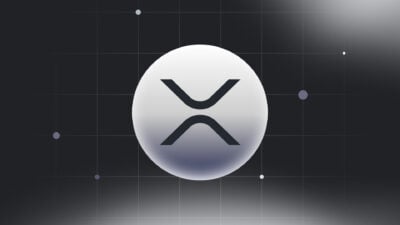Historically, ICO gained significant traction in 2016 and 2017, fueled by the rise of Ethereum and the increasing popularity of blockchain technology. Numerous blockchain projects launched ICOs to fund their development, leading to a surge in token sales and investment activity. Projects across various industries, including finance, gaming, and healthcare, utilized ICOs to raise capital.

However, what is the definition of ICOs? And what are their pros and cons? This article aims to introduce the overall picture about ICO and further discuss their two sides.
What is ICO?

ICO, standing for Initial Coin Offering, is a fundraising mechanism in which new projects sell their underlying cryptocurrency tokens in exchange for funding, typically established in Bitcoin or Ethereum. In other words, it is a way for startups to raise capital without going through traditional venture capitalists or banks. In this case, investors buy into the ICO with the hope that the project will be successful, and the tokens they purchase will increase in value.
How ICO Works
A typical ICO includes follows seven steps as follows:
Step 1: Project Conceptualization
The team behind a project comes up with an idea for a blockchain-based venture. In this stage, this could be anything from a new cryptocurrency to a decentralized application (dApp).
Step 2: Whitepaper Creation

The team creates a whitepaper that outlines the project’s goals, technical details, tokenomics (how the tokens will be distributed and used within the project), roadmap, and other relevant information. This document is crucial for potential investors to understand the project’s purpose and potential.
Step 3: Token Creation

The project team creates a new cryptocurrency token that will be used within their ecosystem. These tokens are usually based on existing blockchain platforms like Ethereum (ERC-20 tokens) or Binance Smart Chain (BEP-20 tokens).
Step 4: Marketing and Promotion
The project team markets the ICO to potential investors through various channels such as social media, forums, and cryptocurrency websites. They aim to generate interest in the project and attract investors who believe in its potential.
Step 5: Token Sale
During the ICO, investors can purchase the project’s tokens using cryptocurrencies like Bitcoin or Ethereum. The token sale usually takes place over a set period of time, during which investors can contribute funds to the project in exchange for tokens at a predetermined price.
Step 6: Token Distribution

After the ICO concludes, the project team distributes the purchased tokens to the investors’ wallets based on the amount they contributed. This distribution may happen immediately after the ICO or according to a predefined schedule.
Step 7: Post-ICO Development
With the funds raised from the ICO, the project team begins developing their platform or product as outlined in the whitepaper. They may also continue marketing efforts to grow their user base and increase adoption of their token.
Advantages and disadvantages of ICOs
Benefits of ICOs
- Access to Capital: ICOs offer blockchain projects a way to raise capital without the need for traditional financial intermediaries like venture capital firms or banks. This democratizes access to funding, allowing startups from around the world to secure investment for their projects.
- Global Reach: ICOs can attract investors from anywhere in the world, providing access to a global pool of capital. This global reach allows projects to tap into diverse investor bases and gain traction in various regions.
- Decentralization: ICOs align with the decentralized nature of blockchain technology by enabling projects to raise funds directly from a distributed network of investors. Consequently, this reduces reliance on centralized financial institutions and fosters a more inclusive and open investment environment.
- Tokenization: ICOs facilitate the tokenization of assets, enabling companies to represent ownership or access rights using blockchain-based tokens. This opens up new opportunities for digitizing and trading a wide range of assets, including securities, real estate, and commodities.
- Incentives for Early Adopters: ICOs often provide incentives for early contributors, such as discounted token prices, bonus tokens, or exclusive access to project features. These incentives encourage early adoption and help attract a community of supporters to the project.

- Liquidity: After an ICO, tokens are typically traded on cryptocurrency exchanges, providing liquidity to investors who wish to buy or sell their tokens. This liquidity can be advantageous compared to traditional private investments, which may have limited liquidity options.
- Community Building: ICOs often involve building a community of supporters and contributors who are invested in the project’s success. This community can provide valuable feedback, contribute to project development, and help drive adoption of the project’s products or services.
Disadvantages of ICOs
- Lack of Regulation: The ICO market has historically been characterized by a lack of regulation, making it susceptible to fraud, scams, and regulatory scrutiny. This lack of oversight can expose investors to significant risks, including loss of funds due to fraudulent or failed projects.
- Investor Protection: Unlike traditional investment vehicles like stocks or bonds, ICOs often lack investor protections. This leaves investors vulnerable to dishonest or incompetent project teams.
- High Risk: Many ICOs are launched by early-stage startups with unproven business models, inexperienced teams, and speculative ideas. Investing in these projects carries a high degree of risk, as there is no guarantee of success or return on investment. Additionally, the cryptocurrency market is known for its volatility, further increasing investment risk.
- Market Volatility: The value of ICO tokens can be highly volatile, subject to rapid price fluctuations driven by market speculation, investor sentiment, and external factors. This volatility can result in significant fluctuations in the value of investments, leading to potential losses for investors.
- Lack of Transparency: Some ICO projects may lack transparency regarding their team, technology, business model, and use of funds. Without adequate information, investors may struggle to make informed investment decisions, increasing the likelihood of investment losses.

- Market Saturation: The proliferation of ICOs has led to hundreds of projects competing for investor attention and capital. This can make it challenging for legitimate projects to stand out and attract funding. As a result, it leads to increased competition and lower success rates for ICOs.
- Exit Scams and Failed Projects: Despite promising concepts and fundraising efforts, many ICO projects have failed to deliver on their promises or have turned out to be outright scams. In some cases, project teams have disappeared with investors’ funds. Consequently, investors are left with little or no recourse for recovering their losses.

Conclusion
To sum up, while ICOs offer opportunities for blockchain projects to raise capital and innovate, investors should approach them with caution and conduct thorough due diligence to mitigate risks. Additionally, regulatory compliance and investor protection should be prioritized to foster a safer and more transparent ICO ecosystem.
About Herond Browser
Herond Browser is a Web browser that prioritizes users’ privacy by blocking ads and cookie trackers, while offering fast browsing speed and low bandwidth consumption. Herond Browser features two built-in key products:
- Herond Shield: an adblock and privacy protection tool;
- Herond Wallet: a multi-chain, non-custodial social wallet.
Herond aims at becoming the ultimate Web 2.5 solution that sets the ground to further accelerate the growth of Web 3.0, heading towards the future of mass adoption.
Join our Community!







